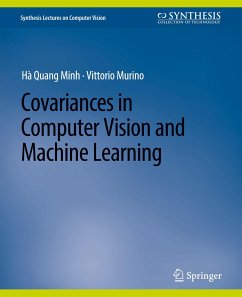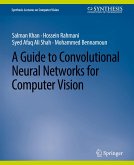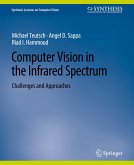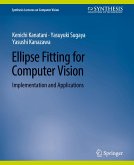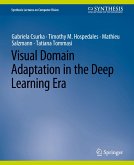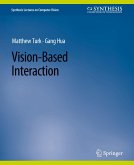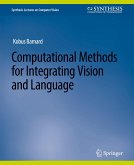Covariance matrices play important roles in many areas of mathematics, statistics, and machine learning, as well as their applications. In computer vision and image processing, they give rise to a powerful data representation, namely the covariance descriptor, with numerous practical applications.
In this book, we begin by presenting an overview of the {\it finite-dimensional covariance matrix} representation approach of images, along with its statistical interpretation. In particular, we discuss the various distances and divergences that arise from the intrinsic geometrical structures of the set of Symmetric Positive Definite (SPD) matrices, namely Riemannian manifold and convex cone structures. Computationally, we focus on kernel methods on covariance matrices, especially using the Log-Euclidean distance.
We then show some of the latest developments in the generalization of the finite-dimensional covariance matrix representation to the {\it infinite-dimensional covariance operator} representation via positive definite kernels. We present the generalization of the affine-invariant Riemannian metric and the Log-Hilbert-Schmidt metric, which generalizes the Log-Euclidean distance. Computationally, we focus on kernel methods on covariance operators, especially using the Log-Hilbert-Schmidt distance. Specifically, we present a two-layer kernel machine, using the Log-Hilbert-Schmidt distance and its finite-dimensional approximation, which reduces the computational complexity of the exact formulation while largely preserving its capability. Theoretical analysis shows that, mathematically, the approximate Log-Hilbert-Schmidt distance should be preferred over the approximate Log-Hilbert-Schmidt inner product and, computationally, it should be preferred over the approximate affine-invariant Riemannian distance.
Numerical experiments on image classification demonstrate significant improvements of the infinite-dimensional formulation over the finite-dimensional counterpart. Given the numerous applications of covariance matrices in many areas of mathematics, statistics, and machine learning, just to name a few, we expect that the infinite-dimensional covariance operator formulation presented here will have many more applications beyond those in computer vision.
In this book, we begin by presenting an overview of the {\it finite-dimensional covariance matrix} representation approach of images, along with its statistical interpretation. In particular, we discuss the various distances and divergences that arise from the intrinsic geometrical structures of the set of Symmetric Positive Definite (SPD) matrices, namely Riemannian manifold and convex cone structures. Computationally, we focus on kernel methods on covariance matrices, especially using the Log-Euclidean distance.
We then show some of the latest developments in the generalization of the finite-dimensional covariance matrix representation to the {\it infinite-dimensional covariance operator} representation via positive definite kernels. We present the generalization of the affine-invariant Riemannian metric and the Log-Hilbert-Schmidt metric, which generalizes the Log-Euclidean distance. Computationally, we focus on kernel methods on covariance operators, especially using the Log-Hilbert-Schmidt distance. Specifically, we present a two-layer kernel machine, using the Log-Hilbert-Schmidt distance and its finite-dimensional approximation, which reduces the computational complexity of the exact formulation while largely preserving its capability. Theoretical analysis shows that, mathematically, the approximate Log-Hilbert-Schmidt distance should be preferred over the approximate Log-Hilbert-Schmidt inner product and, computationally, it should be preferred over the approximate affine-invariant Riemannian distance.
Numerical experiments on image classification demonstrate significant improvements of the infinite-dimensional formulation over the finite-dimensional counterpart. Given the numerous applications of covariance matrices in many areas of mathematics, statistics, and machine learning, just to name a few, we expect that the infinite-dimensional covariance operator formulation presented here will have many more applications beyond those in computer vision.

